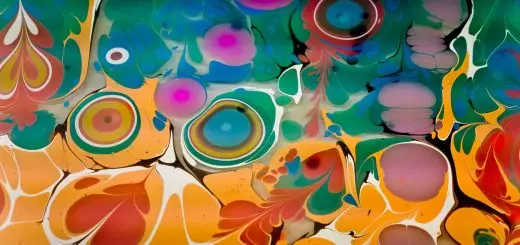Yin and Yang Symbol: Significance in Chinese Culture

Looking for more amazing products? Check out our online store and explore our collection here! Happy shopping!
Before diving in, please note: This post is for informational purposes only. If you’d like to know more about how we approach topics, feel free to check out our friendly Disclaimer Page.
Hey there, amazing readers! 
We’re committed to delivering quality posts, and your support (even just sticking around despite the ads) means everything to us. So, bear with us, and thanks for helping us keep the good vibes rolling. Now, on to the fun stuff!
TRANSLATE BUTTON AT THE END OF THE ARTICLE
A Quick Overview
The Yin and Yang symbol is one of the most recognizable and important symbols in Chinese culture.
It represents the concept of dualism and the interconnectedness of opposites.
The symbol is composed of a circle divided into two halves, one black (Yin) and one white (Yang), each containing a small dot of the opposite color.
The symbol is deeply rooted in Chinese philosophy, medicine, art, martial arts, and Feng Shui practices.
Understanding the significance of the Yin and Yang symbol can provide insight into Chinese culture and the principles that govern it.
The Origin of the Yin and Yang Symbol
The Yin and Yang symbol has its origins in ancient Chinese philosophy, dating back to the Warring States period (475–221 BC).
The concept of Yin and Yang is derived from the ancient Chinese belief in the interplay of opposites in the natural world.
The symbol itself is based on the idea that everything in the universe is interconnected and balanced by opposing forces.
Definition and Meaning of Yin and Yang
Yin and Yang are two complementary forces that are in a constant state of flux and change.
Yin represents darkness, passivity, femininity, and coldness, while Yang represents light, activity, masculinity, and warmth.
The two forces are interdependent and cannot exist without each other.
The dot of Yin in Yang and vice versa signifies the idea that each force contains a seed of its opposite, suggesting a dynamic balance.
Yin and Yang in Chinese Philosophy
In Chinese philosophy, Yin and Yang are fundamental concepts that underpin the understanding of the natural world and human existence.
The balance between Yin and Yang is crucial for harmony and well-being.
The philosophy of Yin and Yang is applied to various aspects of life, including politics, ethics, and social relationships.
Symbolism in Chinese Medicine
In Chinese medicine, the concept of Yin and Yang is used to diagnose and treat illnesses.
The body is seen as a microcosm of the universe, with Yin and Yang energies flowing through the meridians.
Imbalances in these energies are believed to cause disease, and treatment aims to restore harmony between Yin and Yang.
Yin and Yang in Feng Shui Practices
In Feng Shui, the arrangement of spaces is based on the principles of Yin and Yang.
Balancing these energies in the home or workplace is believed to promote health, wealth, and happiness.
By incorporating Yin and Yang elements into the design of a space, practitioners seek to create a harmonious environment.
Cultural Significance in Chinese Art
The Yin and Yang symbol is a common motif in Chinese art and is often used to represent balance, harmony, and unity.
It can be found in traditional paintings, sculptures, and decorative objects.
Artists use the symbol to convey philosophical ideas and spiritual concepts.
Yin and Yang in Martial Arts
In Chinese martial arts, the concept of Yin and Yang is applied to combat techniques.
Practitioners are taught to use both soft (Yin) and hard (Yang) movements to achieve balance and power.
The philosophy of Yin and Yang is also reflected in the principles of martial arts, such as discipline, respect, and self-control.
Balance and Harmony in Chinese Culture
The concept of Yin and Yang permeates all aspects of Chinese culture, emphasizing the importance of balance and harmony.
From cuisine to architecture, from music to literature, the principles of Yin and Yang are deeply ingrained in Chinese traditions and customs.
By striving for equilibrium between opposing forces, individuals can achieve a sense of wholeness and well-being.
Interconnectedness of Yin and Yang
The relationship between Yin and Yang is not one of opposition but of complementarity.
The two forces are interconnected and interdependent, constantly influencing each other.
Just as day turns into night and winter into spring, Yin and Yang flow into each other in an eternal cycle of change.
Evolution of the Yin and Yang Symbol
Over time, the Yin and Yang symbol has become a universal representation of balance and harmony.
It has transcended its origins in Chinese culture to become a symbol of unity and interconnectedness in a global context.
The symbol’s simplicity and elegance have made it a timeless emblem of the duality of existence.
Modern Interpretations of Yin and Yang
In the modern world, the Yin and Yang symbol continues to hold significance as a metaphor for balance and harmony.
It is often used in popular culture, fashion, and design to convey a sense of equilibrium and unity.
The symbol’s enduring appeal lies in its ability to resonate with people from different cultures and backgrounds.
Incorporating Yin and Yang into Daily Life
To incorporate the principles of Yin and Yang into daily life, one can strive to find balance in all aspects of life.
This can involve cultivating both Yin and Yang qualities, such as rest and activity, solitude and socializing, introspection and action.
By embracing the interplay of opposites, individuals can create a sense of harmony and well-being in their lives.
Conclusion
The Yin and Yang symbol holds profound significance in Chinese culture, representing the dynamic interplay of opposing forces and the pursuit of balance and harmony.
From philosophy to medicine, art to martial arts, the principles of Yin and Yang permeate all aspects of Chinese society.
Understanding the symbolism of Yin and Yang can offer valuable insights into the complexities of the human experience and the interconnectedness of all things.
By embracing the principles of Yin and Yang in daily life, individuals can strive for a sense of equilibrium and wholeness.

The Enlightenment Journey is a remarkable collection of writings authored by a distinguished group of experts in the fields of spirituality, new age, and esoteric knowledge.
This anthology features a diverse assembly of well-experienced authors who bring their profound insights and credible perspectives to the forefront.
Each contributor possesses a wealth of knowledge and wisdom, making them authorities in their respective domains.
Together, they offer readers a transformative journey into the realms of spiritual growth, self-discovery, and esoteric enlightenment.
The Enlightenment Journey is a testament to the collective expertise of these luminaries, providing readers with a rich tapestry of ideas and information to illuminate their spiritual path.
Our Diverse Expertise
While our primary focus is on spirituality and esotericism, we are equally passionate about exploring a wide range of other topics and niches 

To ensure we provide the most accurate and valuable insights, we collaborate with trusted experts in their respective domains 
Our blog originally focused on spirituality and metaphysics, but we’ve since expanded to cover a wide range of niches. Don’t worry—we continue to publish a lot of articles on spirituality! Frequently visit our blog to explore our diverse content and stay tuned for more insightful reads.
Hey there, amazing reader! 
Check out our store here and take a peek at some of our featured products below! Thanks for being awesome!










